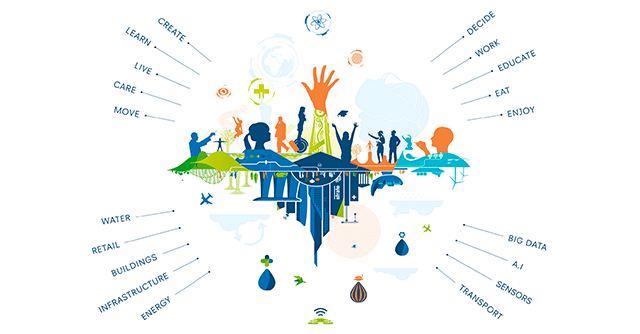
A smart city is a developed city that helps in building a sustainable economy and provides a livable environment and basic infrastructure to the citizens that help them to lead a decent quality of life. Smart cities rely on analytics and digital capabilities to improve their efficiencies and outcomes for children’s education. With the ongoing COVID-19 pandemic, the last few years have been very challenging for teachers in schools and universities.
But, all thanks to smart cities in and around the world. Societies in smart cities are becoming more digital, and new technologies are rapidly emerging. Educational institutions are improving the efficiency and quality of education for students and to make teaching easier.
The Internet allows us to connect with people and retrieve data wherever we are. Being internet technologies a part of personal lives, smart cities aim to improve the quality of education and citizens’ well-being and streamline city management processes through this advanced technology. Smart classrooms in schools and institutions improve the teaching process, helping teachers to do their job more efficiently, and fulfilling students’ needs.
The educators can connect and communicate with students more effectively and track their performance better through the internet. Educators are no more authoritative or regressive figures. They become companions and supporters who would like to guide and assist children in the learner-centric environment. The smart-learning environment in smart cities enables students to get equitable access to digital learning tools. The physical and digital worlds get closer, allowing students to memorize learning materials more easily.
As per research, educational institutions get the maximum benefits from smart cities and integrated technologies. They leverage them to optimize their teaching procedures and deliver optimum results to parents, students, and educators. In addition, a remote learning system has also been developed to help the city build a future on renewable energy. As digital learning opportunities are rapidly increasing, remote learning and tutoring can be more effective than personal learning. The multi-directional learning environment inspires students to participate in discussions, group projects, and critical thinking. Smart classroom learning is a new approach that enables students to engage more efficiently.
In some smart cities, schools use GPS tracking technology to monitor and control their transportation systems. Ensuring students’ safety, and improvement in school transportation is a top priority for schools and institutions. AR (Augmented Reality) and VR (Virtual Reality) are further steps toward building smart cities in the world. AR and VR can be greatly advantageous for students and teachers if used in educational institutes. These technologies can bring immersive learning to the students, deepening student engagement in STEM (Science, technology, engineering, and mathematics).
Educators in smart cities allow students to build cloud projects, share books, ideas, and lectures, and create a self-expanding academic environment. Connecting with students from all over the world enable children to learn things beyond their expectations. Nowadays, students are actively using online services and getting more content on a particular topic for free through cloud-based digital communities. They can learn new approaches, solve problems and share study materials without any restrictions and hindrances.
As each city in India dreams to become smarter, schools and institutions must implement advanced technologies that will strengthen public education systems and ensure students’ success. The cities need to grasp emerging technologies in education and enjoy their benefits. Smart cities help to connect people and encourage the current generation to stay engaged and informed.